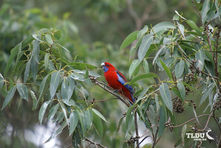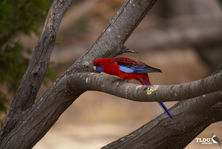
Shoppers Feedback:
Jan 17, 2017
Hello Ros,
I have now paid the invoice, but I would like to write to you just to say a big THANK YOU for getting me the Penguin!
The ChatterMate Penguin became a nice memory for me when I was in New Zealand, and I am so greatful to you for arranging so that I could have it! :-)
Thank you so much!!!!!!!!!!!
Regards,
Malin
Hi Ros,
Many thanks for your very kind email. I really appreciate your prompt reply!
I appreciate your advice regarding the decorations and customs. These are a gift for my daughter’s exchange student family so when she returns home on the weekend I will show her and see if she loves them as much as I do!
Thanks so very much again - I am truly grateful for your kind assistance.
Kind Regards
Bernadette
Ros,
Thanks again for the great customer service. It's a refreshing change!
Best regards,
Trevor
Hey Roz,
Thank you for your emails. Just loved my first order. The cute little Aussie bush critters are going to be used for an office Christmas decoration. My colleagues also liked them and talked about making an order to your site. I'll send you a photo when completed.
I'll be ordering more to send to my daughter's host family in America.
Fabulous service from you.
Kind regards,
Michelle
Thankyou. Order arrived today. One very happy grandson with his new beastly binoculars.
Regards,
Irene
- Home
- Wild Wonders
- Shop
- Aromas of Australia
- Australian Made
- Books
- Book Marks
- Christmas Decoration Sale
- Christmas Decorations
- Clocks
- Drink Holders
- Garden & Outdoor
- Gift Wrapping & Cards
- Home & Giftware
- Jewellery
- Keyrings
- New Products
- Pencils & Pen Holders
- Photo Frames
- Plush Toys
- Plush with Sound
- Sheepskin Rugs
- Stationery
- Stone Carvings
- Toys & Games
- Travel Goods
- Wedding
- Wild Figurines
- Wildlife Safety Products
- Wind Chimes
- Wine Charms
- View All Products
- Wildlife
- Australiana
- Explore
- Contact Us
Crimson Rosella

Quick Facts
| Length: | 34 cm |
| Height: | - |
| Weight: | 129 grams |
| Colour: | Varied |
| Habitat: | Tall eucalypt and wetter forests |
| Food: | Seeds of eucalypts, grasses and shrubs as well as insects and some tree blossoms |
| Predators: | - |
| Status: | Secure in NSW, QLD, SA & VIC. Not Present in TAS, NT & WA |
There are several colour forms of the Crimson Rosella. The form it is named for has mostly crimson (red) plumage and bright blue cheeks. The feathers of the back and wing coverts are black broadly edged with red. The flight feathers of the wings have broad blue edges and the tail is blue above and pale blue below and on the outer feathers. Birds from northern Queensland are generally smaller and darker than southern birds. The 'Yellow Rosella' has the crimson areas replaced with light yellow and the tail more greenish. The 'Adelaide Rosella' is intermediate in colour, ranging from yellow with a reddish wash to dark orange. Otherwise, all the forms are similar in pattern. Young Crimson Rosellas have the characteristic blue cheeks, but the remainder of the body plumage is green-olive to yellowish olive (occasionally red in some areas). The young bird gradually attains the adult plumage over a period of 15 months
The adult Crimson Rosella is similar to male Australian King-Parrots, but differs by having blue cheeks, shoulders, and tail, a whitish, rather than red, bill and a dark eye. Immature Crimson Rosellas also differ from female and immature King-Parrots by having blue cheeks, a whitish bill and a more yellow-green rather than dark green colouring.
There are several populations of the Crimson Rosella. Red (crimson) birds occur in northern Queensland, in southern Queensland to south-eastern South Australia and on Kangaroo Island. Orange birds are restricted to the Flinders Ranges region of South Australia, while yellow ones are found along the Murray, Murrumbidgee and neighbouring rivers (where yellow birds meet red birds they hybridise, producing orange offspring).
Throughout its range, the Crimson Rosella is commonly associated with tall eucalypt and wetter forests.
Crimson Rosellas are normally encountered in small flocks and are easily attracted to garden seed trays. Once familiar with humans, they will accept hand held food. Natural foods include seeds of eucalypts, grasses and shrubs, as well as insects and some tree blossoms.
The Crimson Rosella's nest is a tree hollow, located high in a tree, and lined with wood shavings and dust. The female alone incubates the white eggs, but both sexes care for the young. The chicks remain dependent on their parents for a further 35 days after leaving the nest.
Last Updated: Thursday 18th July, 2013
BirdLife Australia - www.birdlife.org.au
BUSH e-TELEGRAPH
Signup for our monthly newsletter the "e-Telegraph"
Quick Links
Home | The Beginning | About The Land Down Under | Wild Wonders | Advertise on Wild Wonders | Christmas Decoration Sale | Christmas Tree Decorations | Drink Holders | Plush with Sound | Stone Carvings | Wildlife Wine Charms | Freebies | Australian Wildlife | Help Our Wildlife | Australiana | Photo of the Month | Explore The Land Down Under | Contact Us | Legal Notices


